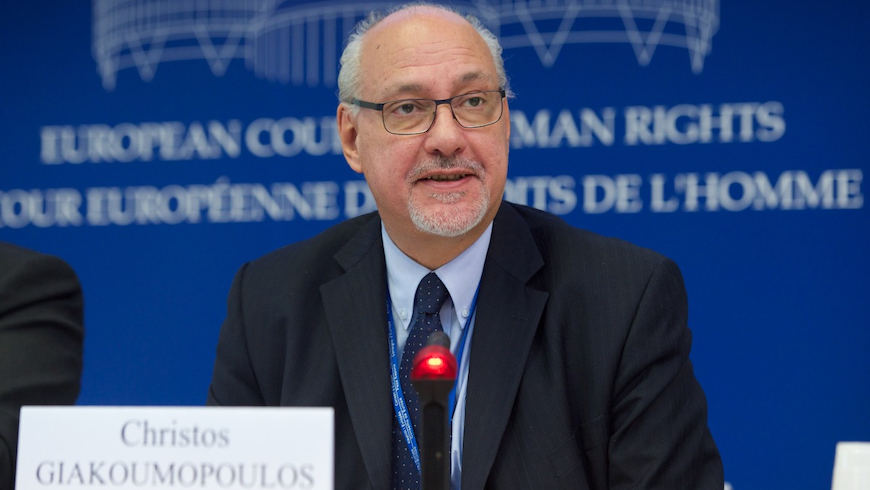GRECO Round Table Gender dimension, 14 October 2015
My intention today is to present some of the information that was voluntarily provided by some 30 GRECO member states in response to a questionnaire on the GRECO’s Fourth Evaluation Round.
In its Fourth Round, we are examining corruption prevention in relation to MPs, judges and prosecutors.
The information was not demanded in a uniform way but rather the questions were designed to try to determine more precisely what information is available - in quantitative terms at least - that would help in further examination of the gender dimensions in corruption. Additional information was collected during the on-site visits, and in so far as judges and prosecutors are concerned, complemented by figures from the CEPEJ reports.
Gender representation
In terms of the judiciary, the data of most interest to GRECO in the context of the Fourth round is on the numbers of judges and prosecutors at each court level and the number of court presidents/heads of prosecutor’s offices disaggregated by gender.
In the majority of European states general legislation has been enacted with a view to achieving gender parity, the adoption of which also affects the organisation and operation of their judicial systems (Austria, Denmark and Iceland expressly indicated that the general law applied in matters of appointment and promotion of judges and prosecutors). Certain states or entities have taken their efforts further and have adopted regulations specific to their judicial systems (Armenia, Bosnia and Herzegovina, most of the federated entities of Germany, Montenegro). Elsewhere, specific action plans have been drawn up based on the general legislation in this field (Norway) or the authorities making judicial appointments are showing a growing awareness of these issues, without there being any specific regulations (Sweden, UK-Northern Ireland).
It is for this reason perhaps that for those states or entities that were able to provide data on the distribution of males/females in the total number of professional judges, we observed an almost equal male/female distribution in the judiciary. The average for all states or entities is 51% for men and 49% for women.
However, concerning the gender distribution of judges at each jurisdiction level, we observe a downward trend of the percentage of female judges in relation to the percentage of male judges, as we move through the judicial hierarchy. Indeed, a majority of women are seen at first instance, while their proportion of is much lower at last instance. It is necessary to note that first instance judges are the most numerous. A contrario, in a few states (Bosnia and Herzegovina, Hungary, Latvia, Romania, Serbia and Slovakia) female judges outnumber men judges at last instance.
Regarding access to responsible positions, we observe that the delicate balance between men and women which is taking place in many European countries in relation to the number of magistrates in general, is not yet reached with regard to the heads of courts. In 31 states or entities, the proportion of male presidents exceeds 50%, in 15 of them 70% and in 8 of them 90% (the Netherlands, Turkey, Georgia, Azerbaijan, Armenia as well as UK-Scotland, Malta and Andorra). In countries with a low number of court presidents, as in Andorra (2) or Malta (3), it is necessary to qualify the situation. Ireland has a perfect balance, whereas in the 9 states or entities with more female court presidents than male, the 60% mark is exceeded only in Romania, Latvia, Slovenia and Greece.
Fewer women than men presidents of the courts are observed, and this is especially true as one moves up through the judicial hierarchy. The average distribution is 36% women and 64% men.
As for prosecutors, between 50% and 75% of prosecutors are women but only 3 countries have indicated that the percentage exceeds 70% (Malta, Cyprus and Andorra).
However, a reduction in the proportion of female prosecutors when climbing up the judicial hierarchy can, as in the case of judges, be observed. However, this trend varies according to the state or entity concerned. Some present a very marked contrast with a very different men/women distribution. Conversely, Montenegro and Iceland report an opposite trend, the proportion of female prosecutors increasing as one goes up the judicial hierarchy. In Denmark, the number of female prosecutors is higher than the number of male prosecutors at all levels of court.
As regards access to positions of responsibility, the situation is very similar to that of judges. The progressive rebalancing in favour of women observed in the judiciary in general has not yet materialised at the level of department heads. Women account, as for judges, only for one third of the total.
The aforementioned data on judges and prosecutors shows that the gender imbalance is typically in favour of more male and female judges and prosecutors across most European states and in senior posts, although country specific data does reveal a more nuanced picture. Consequently, the “glass ceiling” impeding women’s access to the hierarchical progression seems to exist also in the field of justice. The years to come will show whether this trend will tend to be inverted as a result of the perpetuation and strengthening of regulations and practices designed to ensure equal access for men and women in their judicial role and to senior posts, in particular.
It is also of great value that this data is being collected, although not in all GRECO member States. Such data is essential for monitoring gender parity in decision-making roles and determining strategies to improve the situation, therefore it should be collected and analysed over time within each member state.
GENDER and corruption offences statistics
While member states appear to be able to supply data on the numbers and gender of judges, prosecutors (and MPs) fairly easily, the way in which criminal statistics on corruption offences is collected varies significantly from state to state.
Most member states were able to provide gender breakdown for corruption offences but in most cases this related only to the offender. It needs to be emphasised that corruption offending is to a large extent dominated by men and men dominate, again to a large extent, positions in government and other key decision-making institutions in most countries and in most sectors.
The idea that there is a “victim” in terms of corruption offences is not widely accepted among GRECO member states, except for Lithuania and Moldova who do collect data on the “victim” of corruption offences and on their gender along with the gender of the offender (alleged and convicted). It is also a welcome news that in light of the work done by GRECO in this area, Macedonia is taking the opportunity at developing a new system of data collection of offences that would include gender of the perpetrators and victims.
Other than being able to identify public sector corruption offences from private sector corruption data, very little sector related data is collected. While some member states indicated that it was not possible to separate the profession of the offender from the general corruption offences statistics, the fact that specific groups, such as judges and prosecutors and MPs, tend to have statistics kept on them separately with regard to any wrongdoing, means that such data is available. Collecting data on the sector in which corruption offences occur (e.g. construction, education, health, etc.), would be helpful not only for targeting corruption prevention resources but also for identifying where there may be a disproportionate impact on men or women.
Also, little or no data is collected on the numbers of whistleblowing reports generally - whether understood to be reports on criminal offences, reports to regulators such as anti-corruption commissions, or within professional bodies or organisations (e.g. pursuant to a policy or procedure). Where such data is collected, the gender of the whistle-blower would be helpful along with the sector about which the report is made in order to better understand the patterns of corruption in the country (where collecting this information would be legally appropriate of course).
CONCLUSION
GRECO review indicates that while some data is collected as to gender of (MPs), judges and prosecutors, it is still not done automatically. This needs to improve if GRECO and others can continue to build a better and richer understanding of corruption, its differential impact on men and women and particularly in relation to different sectors, as well as how to prevent corruption in the first place. GRECO should ensure that gender is included in most statistics collection involving individuals unless there is privacy or legal reason not to do so and in particular that:
- gender of offenders and victims (where appropriate) be included in corruption statistics as well as the sector in which the offence was committed for cross reference;
- whistleblowing laws and policies are further developed, that data collection includes the gender of the whistle-blower and the sector in which the concern was reported;
- member states conduct/support further national and comparative research into gender dimensions of corruption with a specific focus on sectors in which men or women are over or under-represented either as workers, decision-makers, or as users of the service.









